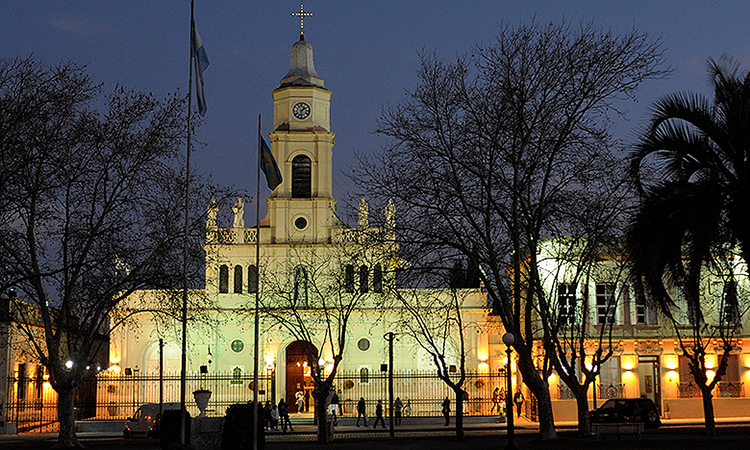The beginning of the Parish Saint Anthony of Padua
In San Antonio de Areco’s market town, a parish stands at the heart of the historical center. It was rebuilt twice and now exhibits Italian contemporary architecture.
From 1710 to 1714, several Indians attacks occurred: everybody was killed, every building was destroyed, and all the rest was burnt. San Antonio de Areco’s population and Arrecifes suffered from these violent raids and as a consequence, the inhabitants made the promise to Saint Anthony of Padua to build a chapel in his honor if they were released from these attacks. Don José Ruiz de Arellano, a pioneer from Spain and the new owner of the town founded the first chapel at the heart of his Estancia on the actual main square of San Antonio de Areco.
There was an oratory in one of the rooms where the believers used to pray Saint Anthony of Padua. In the other room was where the chaplain Don Roque Ximenes used to live. The construction of the oratory was the keystone of the town’s development.
Years went by and between 1720 and 1728, the first chapel was built. It was located at the same location as today and with the same frontage. Its walls were made of rammed earth, its roof of tiles and the building included a double door and a window. The tower was built later around 1759.
On October, 23th 1730, the first ordinance law was adopted, ordering the construction of six parishes in each province. Pago de Areco (the town’s name at that time) was one of the parishes. Consequently, the chapel turned into a parish. This day is now considered as the foundation date of San Antonio de Areco.
In 1782, it was decided that a second church would be built just to the right of the present one. This church is mentioned in many documents and archives. The new building was completed in 1792.
The new building was finished in 1792. The inaugural party lasted for over more than three days! The new temple was twice as big as the old one and included a roof made of shingle and wooden mesh from Paraguay. The floor was tiled and made in San Antonio de Areco. The frontage had no bell tower. This church was working until 1868 and then was demolished but conserved the sacristy in order to celebrate the mass when the third and actual church was being built.

The third temple was designed and built by the architect Enrique Hunt and then inaugurated on July 9th, 1870 with the priest José Matias Cambra. The original building, whose architecture is based on an Italian style was renovated on a regular basis with an important change in 1940, financed by the family Laplacette.
The foundation stone was laid on February 7th, 1869 and is located underneath the main entrance door. In this stone was put a lead box, in it the genuine act written on a parchment, some daily newspapers and a few coins of period.






